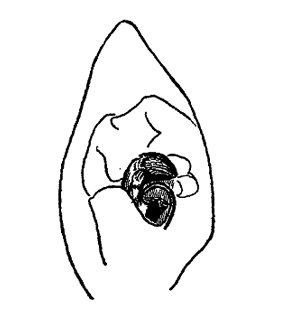Pardosa saturatior Simon, 1937
Beschreibung
Pedipalpus Männchen: Tarsus 1.5 mm lang, sehr dunkel, schwarz behaart. Epigyne mit Septum, 0.75 mm lang. Prosoma schokoladenbraun, dünn grau behaart, laterale Bänder in 3-4 Flecken aufgelöst. Beine rötlich gelb, deutlich geringelt. Opisthosoma grau-schwarz mit sehr undeutlichem Zeichnungsmuster.
Körperlänge Männchen: 7.0-8.0 mmKörperlänge Weibchen: 7.8-9.5 mm
Verbreitung
Phänologie
| Jan | Feb | Mar | Apr | May | Jun | Jul | Aug | Sep | Oct | Nov | Dec |
 |  |
Abbildungen
Verbreitungsnachweise
"No reference" bedeutet nicht, dass die Art in diesem Land nicht vorkommt, sondern dass wir die Referenz hierfür noch nicht eingefügt haben. Wir arbeiten daran.
Literatur
Arnold K (2001) Beitrag zur Spinnenfauna (Arachnida, Araneae) des Fürstentums Liechtenstein. Berichte der Botanisch-Zoologischen Gesellschaft Liechtenstein-Sargans-Werdenberg 28: 211-244 ![]()
Branco V V, Morano E, Cardoso P (2019) An update to the Iberian spider checklist (Araneae). Zootaxa 4614: 201-254 ![]()
Chiarle A, Kronestedt T, Isaia M (2013) Courtship behavior in European species of the genus Pardosa (Araneae: Lycosidae). Journal of Arachnology 41: 108-125 ![]()
Kostanjšek R, Kuntner M (2015) Araneae Sloveniae: a national spider species checklist. ZooKeys 474: 1-91 ![]()
Pantini P, Isaia M (2019) Araneae.it: the online catalog of Italian spiders, with addenda on other arachnid orders occurring in Italy (Arachnida: Araneae, Opiliones, Palpigradi, Pseudoscorpionida, Scorpiones, Solifugae). Fragmenta Entomologica 51: 127-152 ![]()
Schenkel E (1925) Beitrag zur Kenntnis der schweizerischen Spinnenfauna. Revue Suisse de Zoologie 32: 253-318 ![]()
Tongiorgi P (1966a) Italian Wolf spiders of the genus Pardosa (Araneae: Lycosidae). Bulletin of the Museum of Comparative Zoology 134: 275-334 ![]()
WSC (2025) World Spider Catalog. Version 26. Natural History Museum Bern, online at http://wsc.nmbe.ch (28.2.2025) doi: 10.24436/2 ![]()
Updates
| 04-06-2024 | Distribution update | Detail |



